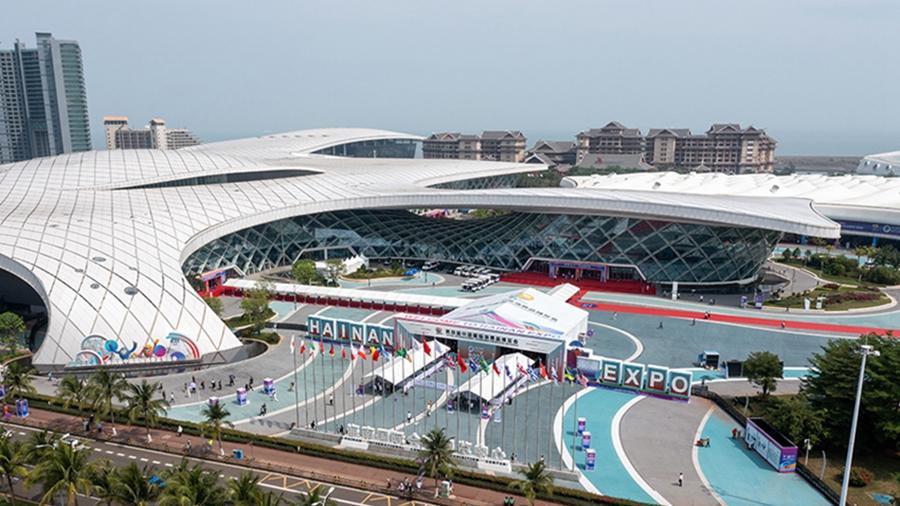BRI high on agenda at China’s local governments’ 2025 work reports
At the just concluded local two sessions in various provinces, autonomous regions, and municipalities, development of the Belt and Road Initiative (BRI) remained an important work focus in local government work reports for the year 2025.
Regions have proposed deeper cooperation in transportation, logistics, trade, energy, and cultural exchanges, with countries and regions participating in the BRI, while promoting high-level opening-up and fostering high-quality economic growth.
The tailored measures taken by local governments aim to outline a roadmap for BRI development in 2025, building on practical experiences of deepening BRI cooperation in recent years, analysts said.
Connectivity enhanced
Many provinces, autonomous regions, and municipalities have prioritized enhancing connectivity in their government work reports for BRI-related tasks in 2025, encompassing policy coordination, infrastructure connectivity, unimpeded trade, financial integration, cultural exchanges, and cooperation in new fields.
In terms of infrastructure, Southwest China's Chongqing Municipality announced in its government work report that it plans to accelerate the development of the New International Land-Sea Trade Corridor, while ensuring the consistent operation of "China-Laos-Thailand" train services and promoting the China-Singapore (Chongqing) Demonstration Initiative on Strategic Connectivity.
The New International Land-Sea Trade Corridor is a key logistics network connecting China's western regions to global markets. So far, it has expanded its reach to 555 ports in 127 countries and regions, according to the Xinhua News Agency.
Southwest China's Guizhou Province pledged to enhance BRI development via the corridor and expand its international reach, with a particular focus on Southeast, South, and Central Asia, according to its government work report released on January 19.
Guizhou aims to establish a key international freight hub for the southwestern region of China. The province will enhance the reliability of train operations along the New International Land-Sea Trade Corridor, the China-Europe (Central Asia) Railway Expresses and the China-Laos Railway. Guizhou will also restore or add 15 international and regional passenger routes.
South China's Guangxi Zhuang Autonomous Region plans to enhance the quality and operational efficiency of the New International Land-Sea Trade Corridor, with particular emphasis on the construction of the Pinglu Canal, a flagship project under the corridor, read its government work report.
Pinglu Canal links the Xijiang River's mainstream to Guangxi's Beibu Gulf international hub ports. After completion, it will provide the shortest, most cost-effective, and convenient sea-going waterway in southwestern China. The project is scheduled to start operation by 2026, marking 2025 as a pivotal year for construction, with a planned investment of 17 billion yuan ($2.3 billion).
The project will facilitate the direct shipment of goods from Guangxi and Southwest China's Yunnan and Guizhou to sea ports through river systems, becoming a convenient and cost-effective passage to ASEAN members, according to a Xinhua report.
For Northwest China's Xinjiang Uygur Autonomous Region, it plans to upgrade the Kashgar Economic Development Zone and the Horgos Port, and build a comprehensive international aviation hub serving Central and West Asia, so as to strengthen economic and trade ties with Central Asian countries. Located in easternmost Jilin, the city of Hunchun borders Russia and the Democratic People's Republic of Korea. Thanks to China-Europe freight trains and the railway that links China and Russia, the freight volume at the Hunchun border rail port has risen significantly in recent years, according to Xinhua.
East China's Fujian Province said it will focus on promoting the construction of the core area of the 21st Century Maritime Silk Road, improving maritime shipping capacity, and strengthening economic and trade exchanges with ASEAN members.
East China's Zhejiang Province prioritizes high-quality services in its BRI development. The province will develop a high-standard commodity resource allocation hub, and will attract service institutions such as maritime law agencies and classification societies, according to its government work report.
Shanghai also intends to expedite the development of the Silk Road E-commerce Cooperation Pilot Zone while enhancing the comprehensive overseas service system, the municipal government work report showed.
The city plans to introduce a global science and technology partnership initiative and establish additional Belt and Road joint laboratories.
Benefitting all
The two sessions play a directive role in China's work focuses for the whole year, which is written in the government work reports of all levels. The national two sessions are usually held in March each year.
Since the BRI was proposed by China in 2013, it has been a cornerstone of government work reports in various regions.
The Central Economic Work Conference held in December, which decided on priorities for the economic work in 2025, also urged solid progress in high-quality Belt and Road cooperation and improvement in the overseas comprehensive service system, according to Xinhua.
In 2025, China's commitment to high-quality Belt and Road cooperation will not waver, and the principle of seeking the greatest common denominator for cooperation with other countries will remain unchanged, the Global Times said in an editorial published on January 2.
The significant contribution of BRI to the world lies in China offering a widely applicable development model and reference for numerous developing countries, said Wang Peng, an associate research fellow at the Beijing Academy of Social Sciences.
"The BRI facilitates economic growth in participating countries and helps bridge the gap with developed nations, particularly in technology. A cornerstone of the BRI's success is the principle of shared development. China shares development opportunities with the world, explores new paths to promote common development, and achieves mutual benefits and win-win results," said Wang.
China's actions and propositions in advocating for multilateralism and an open world economy have set an example for the international community and provided strong support for global cooperation, said Wang.
Some "small and beautiful" projects have enhanced and will continue to enhance the quality of life for people in BRI partner countries. The emphasis also echoes the goal of fostering a global community with a shared future, said Liang Haiming, chairman of the Hong Kong-based China Silk Road iValley Research Institute.
So far, China has established high-quality BRI partnerships with over 150 countries, and backed more than 1,100 projects with about $20 billion in development funding.
Photos
Related Stories
- Financial Street Forum charts the course of financial cooperation under BRI
- Trade through BRI-backed economic zone in Cambodia hits record high in 2024
- China to contribute to modernization of Global South countries: spokesperson
- China reports active trade with BRI countries in 2024: commerce ministry
- China, Sri Lanka bolster BRI bond
Copyright © 2025 People's Daily Online. All Rights Reserved.









